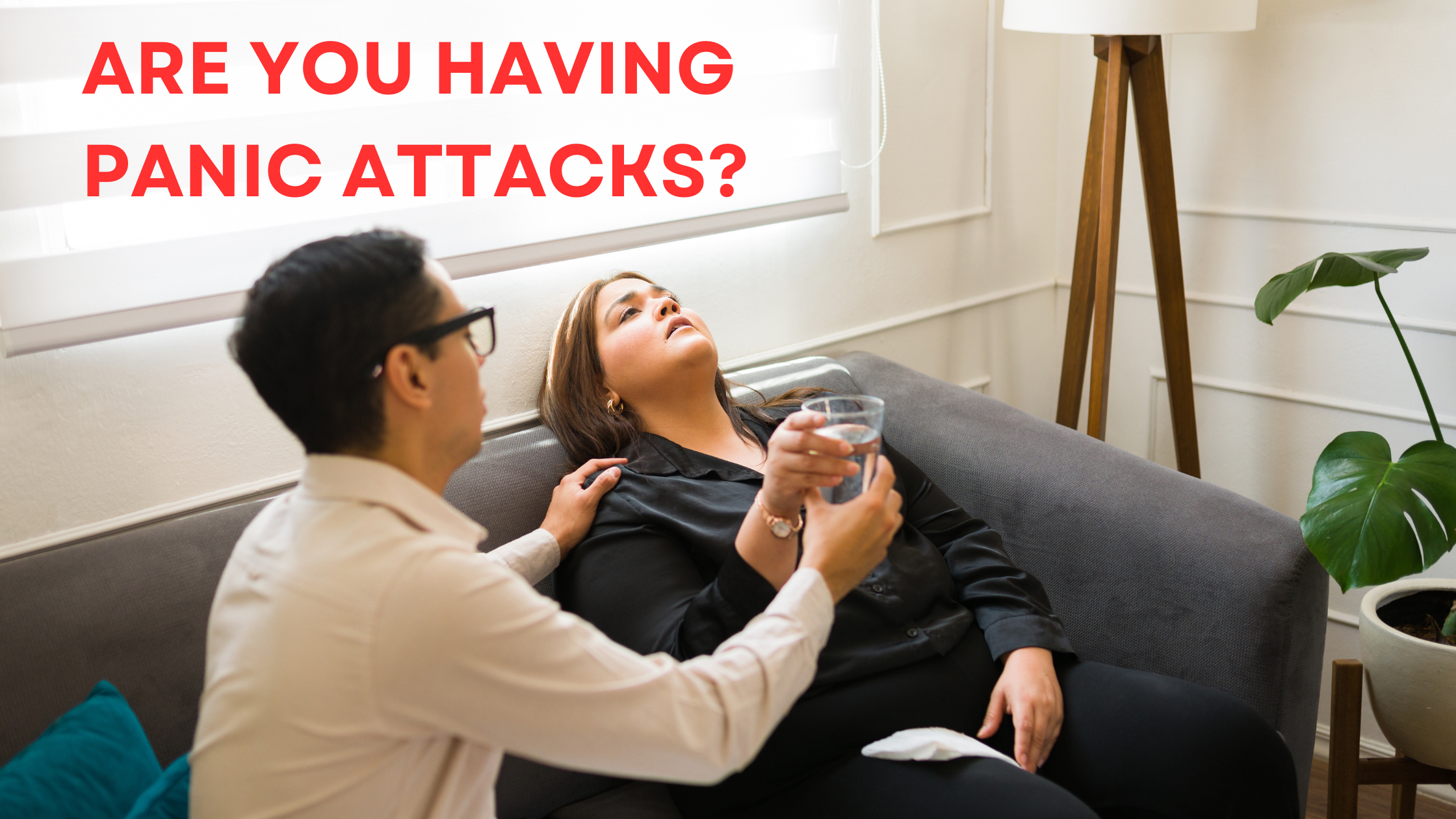Coping Strategies for Dealing with Panic Attacks
While having a panic attack might leave one feeling extremely afraid and powerless, it’s crucial to keep in mind that many other people have gone through similar challenges. Even though these episodes can be rather intense, there are useful strategies for recovering calmness and navigating through the panic. In this article, we’ll explore useful techniques designed to provide people the confidence to face and overcome panic episodes when they arise. You may regain control over your mental health and develop resilience by arming yourself with these knowledge and skills. Never forget that there is always hope and the chance to regain stability and calm in the middle of the chaos caused by panic.
1. Identify the Signs:
To effectively manage a panic attack, one must be aware of its symptoms. Frequent symptoms like shaking, sweating, and an increased heartbeat can be used as early warning indications of an attack. By quickly recognising these signs, you can act proactively to stop the panic attack and reduce its severity. Practicing deep breathing exercises, using grounding techniques, or asking a trusted person for support are some examples of early intervention. You give yourself the ability to take back control and get through the episode more easily by recognising and acting upon the warning signals as soon as they appear.

2. Practice Deep Breathing:
Breathing slowly and deeply can help calm your nervous system and reduce anxiety during a panic attack. Concentrate on taking deep breaths with your nose, letting your belly swell with each one, then slowly releasing the breath through your lips. Continue using this breathing method until you start to feel at ease and have control over your breathing habits again. You can encourage calm and progressively lessen the severity of the panic attack by consciously breathing deeply.

3. Ground Yourself:
Focusing on the present moment can be achieved by applying grounding strategies. Focus on the physical sensations around you, such as the feel of an object on your hands or the grip of your feet on the ground, to stimulate your senses. You can stop worrying thoughts and find peace again by losing yourself in these physical feelings. This kind of mindfulness practice helps you ground yourself in the present moment, which promotes a stronger sense of steadiness and serenity even in the midst of chaos.

4. Challenge Negative Thoughts:
Although panic episodes are frequently triggered by adrenaline, it is important to critically examine the accuracy of this idea. Determine whether these ideas are based on real data or are just the product of unreasonable worries. Promote the substitution of logical and positive viewpoints for negative ones. Adopting a realistic and positive viewpoint can improve mental health and lessen the effects of negative thought patterns.

5. Use Visualization:
Making a mental image of a calm and serene setting and letting yourself get lost in the small things of the sights, sounds, and smells is known as visualisation. You can direct your attention away from panic or anxiety-inducing sensations by closing your eyes and concentrating on these sensory aspects. You develop inner peace and serenely through this practice, which promotes a more at ease mental state. Regular practice can make visualisation an effective technique for stress reduction and general wellbeing enhancement.

6. Progressive Muscle Relaxation:
Muscle tightness is a common side effect of panic attacks, which are characterised by strong emotions of fear and anxiety. Progressive muscle relaxation, a deliberate process of tensing and then releasing each muscle group separately, is one useful strategy to relieve this stress. People who regularly use this technique may see a decrease in their overall stress levels as well as an increase in their degree of peace and relaxation. Including progressive muscle relaxation in one’s practice can be very helpful in controlling panic episodes and promoting a higher level of wellbeing.

7. Reach Out for Support:
Contacting a dependable friend, relative, or mental health professional can offer much-needed comfort and support during panic attacks. By trusting in a trustworthy person, you can receive comfort and assurance that can lessen the severity of your panic attack. They might also provide insightful feedback or consoling remarks to help you get through the episode more easily. Recall that getting help is a brave step towards successfully managing your mental health. You don’t have to confront this alone. Having support from others, whether in the form of a listening ear or useful guidance, can greatly improve your capacity to manage panic attacks.

8. Establish a Safety Net:
Developing a customised “safety net” strategy is crucial to properly handling panic attacks. Make a customised list of grounding exercises, vital emergency contacts, and relaxing pastimes. In times of need, having these resources close at hand might provide one a sense of security. Having a well-thought-out plan in place can help reduce anxiety and provide comfort. By taking proactive measures to establish your safety net, you will give yourself the ability to handle panic attacks with more resilience and self-assurance.

Conclusion:
While having a panic attack can be extremely difficult, there are useful coping strategies that can lessen their effects. You can lessen the frequency and intensity of your panic episodes by incorporating these techniques into your everyday routine. It is essential that you get professional help and direction, particularly if your panic episodes are severe or recurrent. With dedication and perseverance, you can gradually build a customised collection of coping mechanisms that suit your requirements and preferences. With the help of this toolbox, you’ll be able to manage panic attacks better and reclaim stability and control over your life.
How can I differentiate between a panic attack and regular stress or anxiety?
Understanding the nuances of panic attacks versus everyday stress is crucial. Explore the distinct characteristics of panic attacks and learn to identify the signs that distinguish them from common anxiety.
Are there long-term strategies to prevent panic attacks altogether?
While coping strategies during a panic attack are essential, it’s also important to address the root causes. Discover long-term strategies and lifestyle adjustments that can help minimize the frequency and intensity of panic attacks.
What role does professional help play in managing panic attacks?
Acknowledge the significance of seeking professional guidance. Explore the various therapeutic approaches, such as cognitive-behavioral therapy (CBT) or medication, and understand how they can complement your efforts in managing panic attacks.
Can panic attacks be triggered by specific situations, and how can I prepare for them?
Identify potential triggers that may lead to panic attacks and develop a personalized plan for handling these situations. Learn how to anticipate and manage triggers effectively to reduce the likelihood of panic attacks occurring.
Is it possible to lead a normal life after experiencing panic attacks?
Address concerns about the impact of panic attacks on daily life. Explore success stories and strategies from individuals who have overcome or effectively managed panic attacks, emphasizing the possibility of leading a fulfilling and normal life despite these challenges.
Subscribe to our newsletters!



Leave a Reply